 W
WGold is a chemical element with the symbol Au and atomic number 79, making it one of the higher atomic number elements that occur naturally. In a pure form, it is a bright, slightly reddish yellow, dense, soft, malleable, and ductile metal. Chemically, gold is a transition metal and a group 11 element. It is one of the least reactive chemical elements and is solid under standard conditions. Gold often occurs in free elemental (native) form, as nuggets or grains, in rocks, in veins, and in alluvial deposits. It occurs in a solid solution series with the native element silver and also naturally alloyed with copper and palladium. Less commonly, it occurs in minerals as gold compounds, often with tellurium.
 W
WAqua regia is a mixture of nitric acid and hydrochloric acid, optimally in a molar ratio of 1:3. Aqua regia is a yellow-orange fuming liquid, so named by alchemists because it can dissolve the noble metals, gold and platinum, though not all metals.
 W
WIn chemistry, aurophilicity refers to the tendency of gold complexes to aggregate via formation of weak metallophilic interactions.
 W
WBimetallism is a monetary standard in which the value of the monetary unit is defined as equivalent to certain quantities of two metals, typically gold and silver, creating a fixed rate of exchange between them.
 W
WA gold certificate in general is a certificate of ownership that gold owners hold instead of storing the actual gold. It has both a historic meaning as a U.S. paper currency (1863–1933) and a current meaning as a way to invest in gold.
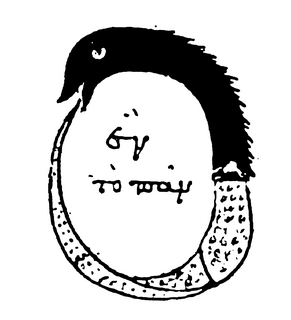 W
WIn alchemy, the term chrysopoeia means transmutation into gold. It symbolically indicates the creation of the philosopher's stone and the completion of the Great Work.
 W
WThe circled dot, circumpunct, or circle with a point at its centre is an ancient symbol. It can represent:Solar systemSolar symbol used to represent the Sun The sun / Gold The sun / Ra The sun / a day Religion and philosophyKeter (Kabbalah) Spirit (Ojibwa) MonismLanguage and linguistics
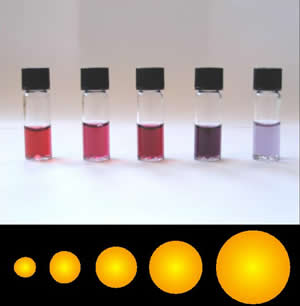 W
WColloidal gold is a sol or colloidal suspension of nanoparticles of gold in a fluid, usually water. The colloid is usually either an intense red colour or blue/purple . Due to their optical, electronic, and molecular-recognition properties, gold nanoparticles are the subject of substantial research, with many potential or promised applications in a wide variety of areas, including electron microscopy, electronics, nanotechnology, materials science, and biomedicine.
 W
WPure gold is slightly reddish yellow in color, but colored gold in various other colors can be produced.
 W
WEl Dorado, originally El Hombre Dorado or El Rey Dorado, was the term used by the Spanish Empire to describe a mythical tribal chief (zipa) of the Muisca people, an indigenous people of the Altiplano Cundiboyacense of Colombia, who, as an initiation rite, covered himself with gold dust and submerged in Lake Guatavita. The legends surrounding El Dorado changed over time, as it went from being a man, to a city, to a kingdom, and then finally to an empire.
 W
WEdible gold is a particular type of gold authorized by the European Union and the United States as a food additive, under the code E 175. The precious metal can be used for culinary purposes as it can be safely consumed. It is widely used in the haute cuisine in a gastronomical trend towards extravagant and rich meals. It can be employed in several foods and beverages such as in cookies decoration, in wines or liquors, as sushi garnishment or over ice cream. There are neither side effects nor benefits from eating gold since it is a biologically inert metal and it is suitable for use in food since it does not oxidize or corrode in moist air, unlike many other metals.
 W
WElectrum is a naturally occurring alloy of gold and silver, with trace amounts of copper and other metals. The ancient Greeks called it "gold" or "white gold", as opposed to "refined gold". Its colour ranges from pale to bright yellow, depending on the proportions of gold and silver. It has been produced artificially, and is also known as "green gold".
 W
WEstofado is an artistic technique that imitates the appearance of gold brocade. The term comes from the italian "stoffa" (fabric) in reference to the fine textiles it seeks to reproduce. Its origin is found in the gothic period, its use became more popular during the renaissance and baroque periods, particularly in Spain and its cultural sphere of influence, where it became prevalent. While estofado is mostly used for wooden sculpture, either statuary in the round or reliefs, it is can also be used on other mediums, such as stone sculptures or panel paintings.
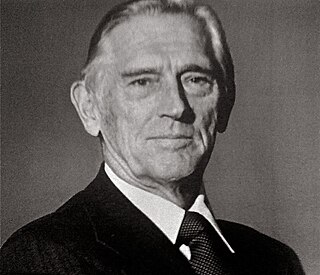 W
WJohn Exter was an American economist, member of the Board of Governors of the United States Federal Reserve System, and founder of the Central Bank of Sri Lanka. He is also known for creating Exter's Pyramid.
 W
WFidelity Printers and Refinery is a security printing and gold refinery company wholly owned by the Reserve Bank of Zimbabwe established in 1966. FPR operates from a printing and gold refinery plant located in Msasa Industrial area in Harare and a coin minting facility in Bulawayo.
 W
WGeumbak is a Korean traditional craft for applying extremely thin gold leaf on hanbok, or other fabrics for decoration. Artisans who specialize in the technique are called geumbakjang (금박장).
 W
WGilding is a decorative technique for applying a very thin coating of gold to solid surfaces such as metal, wood, porcelain, or stone. A gilded object is also described as "gilt". Where metal is gilded, the metal below was traditionally silver in the West, to make silver-gilt objects, but gilt-bronze is commonly used in China, and also called ormolu if it is Western. Methods of gilding include hand application and gluing, typically of gold leaf, chemical gilding, and electroplating, the last also called gold plating. Parcel-gilt objects are only gilded over part of their surfaces. This may mean that all of the inside, and none of the outside, of a chalice or similar vessel is gilded, or that patterns or images are made up by using a combination of gilt and ungilted areas.
 W
WGold, also called golden, is a color.
 W
WA gold compact disc is one in which gold is used in place of the super pure aluminium commonly used as the reflective coating on ordinary CDs or silver on ordinary CD-Rs
 W
WGold extraction refers to the processes required to extract gold from its ores. This may require a combination of comminution, mineral processing, hydrometallurgical, and pyrometallurgical processes to be performed on the ore.
 W
WGold glass or gold sandwich glass is a luxury form of glass where a decorative design in gold leaf is fused between two layers of glass. First found in Hellenistic Greece, it is especially characteristic of the Roman glass of the Late Empire in the 3rd and 4th century AD, where the gold decorated roundels of cups and other vessels were often cut out of the piece they had originally decorated and cemented to the walls of the catacombs of Rome as grave markers for the small recesses where bodies were buried. About 500 pieces of gold glass used in this way have been recovered. Complete vessels are far rarer. Many show religious imagery from Christianity, traditional Greco-Roman religion and its various cultic developments, and in a few examples Judaism. Others show portraits of their owners, and the finest are "among the most vivid portraits to survive from Early Christian times. They stare out at us with an extraordinary stern and melancholy intensity". From the 1st century AD the technique was also used for the gold colour in mosaics.
 W
WGold leaf is gold that has been hammered into thin sheets by goldbeating and is often used for gilding. Gold leaf is available in a wide variety of karats and shades. The most commonly used gold is 22-karat yellow gold.
 W
WThe Gold Market is a narrow covered passageway located in the old quarter of Gaza; it is both a center for trading and buying gold, and location for foreign exchange. The Market lies along the southern edge of the Great Mosque of Gaza, beside the main Omar Mukhtar Street. The Market is configured with a pointed and vaulted roof above the central road, which is lined on both sides by small shops that are themselves roofed by the cross vaults of the covered central road.
 W
WThe Gold of Tolosa is the appellation used to refer to a semi-legendary treasure hoard seized by the ancient Roman proconsul Quintus Servilius Caepio from the Volcae town of Tolosa, modern-day Toulouse.
 W
WGold repatriation refers to plans of various governments to bring home their gold stored outside the home country.
 W
WGold holdings are the quantities of gold held by individuals, private corporations, or public entities as a store of value, an investment vehicle, or perceived as protection against hyperinflation and against financial and/or political upheavals.
 W
WA gold reserve was the gold held by a national central bank, intended mainly as a guarantee to redeem promises to pay depositors, note holders, or trading peers, during the eras of the gold standard, and also as a store of value, or to support the value of the national currency.
 W
WA gold standard is a monetary system in which the standard economic unit of account is based on a fixed quantity of gold. The gold standard was widely used in the 19th and early part of the 20th century. Most nations abandoned the gold standard as the basis of their monetary systems at some point in the 20th century, although many still hold substantial gold reserves.
 W
WGold working in the Bronze Age British Isles refers to the use of gold to produce ornaments and other prestige items in the British Isles during the Bronze Age, between circa 2500 and c.800 BCE in Britain, and up to about 550 BCE in Ireland. In this period, communities in Britain and Ireland first learned how to work metal, leading to the widespread creation of not only gold but also copper and bronze items as well. Gold artefacts in particular were prestige items used to designate the high status of those individuals who wore, or were buried with them.
 W
WA gold–aluminium intermetallic is an intermetallic compound of gold and aluminium that occurs at contacts between the two metals.
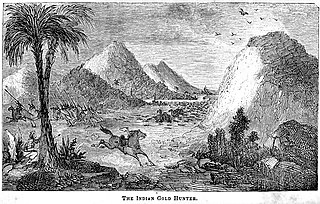 W
WThe gold-digging ant is a mythical insect described in classical and medieval bestiaries. They were dog- or fox-sized ants that dug up gold in sandy areas. Some versions of the Physiologus said they came from Ethiopia, while Herodotus claimed they were located in India.
 W
WGoldbeating is the process of hammering gold into an extremely thin unbroken sheet for use in gilding.
 W
WThe Golden Bog of Cullen is an archaeological site located in County Tipperary, Ireland. Discovered in the 18th century, it has been described as "one of the most important and prolific sites" in Ireland; unfortunately, it was discovered before modern methods of preservation and collection, and almost all of the finds were melted down.
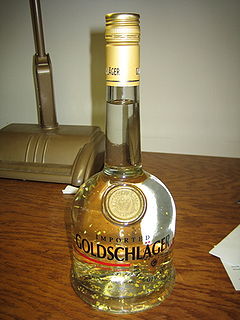 W
WGoldschläger is a Swiss cinnamon schnapps, a liqueur with very thin, yet visible flakes of gold floating in it. The actual amount of gold has been measured at approximately 13 mg in a one-litre bottle. As of December 2019 this amounts to €0.52/US$0.65 on the international gold market.
 W
WGoloid is an alloy of silver, gold and copper patented by Dr. William Wheeler Hubbell on May 22, 1877. The patent specifies 1 part gold, 24 parts silver, and 2.5 parts copper ; however, the patent also states that "The proportions may be slightly varied" and goes on to specify that the silver portion can range from 20 times to 30 times that of the gold, and the copper could range from one-eighth to one-twelfth of the total mixture. The patent specifies that the metals be separately melted, then mixed, along with "sulphate of sodium or sulphate of potassium" in the amount of one part sulfate to one thousand parts metal. The alloy, in varying proportions, was used by the United States Mint to strike pattern dollars, sometimes called "metric dollars" from 1878 to 1880. Patterns of the same design were struck in other metals, including aluminum, copper, normal coin silver, lead, and white metal.
 W
WThe Good Delivery specification is a set of rules issued by the London Bullion Market Association (LBMA) describing the physical characteristics of gold and silver bars used in settlement in the wholesale London bullion market. It also puts forth requirements for listing on the LBMA Good Delivery List of approved refineries.
 W
WHeterogeneous gold catalysis refers to the catalysis of chemical reactions by gold, typically supported on metal oxide substrates. Despite the well known inertness of bulk gold, decreasing the diameter of supported gold clusters to c. 2 to 5 nm result in high catalytic activities towards low-temperature carbon monoxide (CO) oxidation. Several other industrially relevant reactions are also observed such as H2 activation, water gas shift, and hydrogenation.
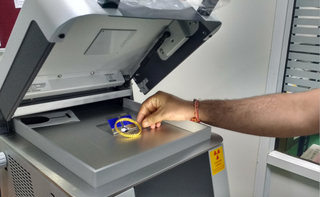 W
WThe Karatmeter is a scientific instrument which uses X-rays to give an exact reading of the purity of gold. Due to its very high precision and fast result, X-ray analysis has been adopted by international agencies in India as part of the certification process used to hallmark gold. It is an accurate, non-destructive means of testing the purity of gold and other related elements. X-Ray method of Gold analysis gives the purity of gold up to 10-12 microns and hence it gives the analysis of coating only.
 W
WA kinebar is a gold bar which contains a hologram to protect its authenticity. Kinebars use a hologram called a "kinegram", a diffractive optical variable image device which is embossed into the gold substrate. "Kinegram" is a trademark of OVD Kinegram AG (Switzerland). The hologram is intended both as a high-security feature and for visual appeal.
 W
WLaser sintering of gold is a jewellery manufacturing technique first developed by Towe Norlén and Lena Thorsson.
 W
WThe Latrobe nugget is one of the largest clusters of cubic gold crystals known in the world and is kept at the Natural History Museum in London. The nugget weighs 717 grams. It was found at Mount McIvor, Victoria, Australia. It was raised on 1 May 1853 in the presence of Charles La Trobe, Governor of Victoria, and was named in his honour.
 W
WA gold medal is a medal awarded for highest achievement in a non-military field. Its name derives from the use of at least a fraction of gold in form of plating or alloying in its manufacture.
 W
WGold medals are awards typically given for the highest achievement in a field or competition.
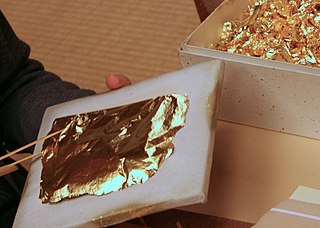 W
WA metal leaf, also called composition leaf or schlagmetal, is a thin foil used for decoration. Metal leaves can come in many different shades. Some metal leaves may look like gold leaf but do not contain any real gold. This type of metal leaf is often referred to as imitation leaf.
 W
WA metallurgical assay is a compositional analysis of an ore, metal, or alloy.
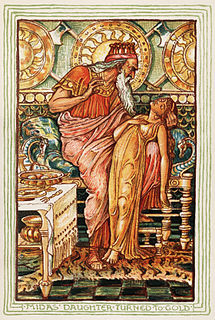 W
WMidas is the name of one of at least three members of the royal house of Phrygia.
 W
WItaly v France, United Kingdom and United States [1954] ICJ 2 was part of a long-running dispute over the fate of Nazi gold that was originally seized from Rome. The ICJ held it had no jurisdiction.
 W
WThe Moscow Gold, or alternatively Gold of the Republic, was 510 tonnes of gold, corresponding to 72.6% of the total gold reserves of the Bank of Spain, that were transferred from their original location in Madrid to the Soviet Union a few months after the outbreak of the Spanish Civil War. This transfer was made by order of the government of the Second Spanish Republic, presided over by Francisco Largo Caballero, through the initiative of his Minister of Finance, Juan Negrín. The term also encompasses the subsequent issues relating with the gold's sale to the USSR and the use of the funds obtained. The remaining fourth of the Bank's gold reserves, 193 tonnes, was transported and exchanged into currency in France, an operation which is also known by analogy as the "Paris Gold".
 W
WMyrmekes are mythical creatures in Greek mythology. Their name is Greek for "ants."
 W
WOrmolu is the gilding technique of applying finely ground, high-carat gold–mercury amalgam to an object of bronze, and for objects finished in this way. The mercury is driven off in a kiln leaving behind a gold coating. The French refer to this technique as "bronze doré"; in English, it is known as "gilt bronze". Around 1830, legislation in France had outlawed the use of mercury for health reasons, though use continued to the 1900s.
 W
WPeak gold is the date at which the maximum rate of global gold extraction is reached. According to Hubbert peak theory, after the peak, the rate of production declines until it approaches zero. Unlike petroleum, which is destroyed in use, gold can be reused and recycled.
 W
WPolyvalent DNA gold nanoparticles, now more commonly referred to as spherical nucleic acids, are colloidal gold particles densely modified with short, highly oriented, synthetic DNA strands. They were invented by Chad Mirkin et al. at Northwestern University in 1996. Paul Alivisatos et al. at the University of California, Berkeley introduced a related monovalent structure the same year. Due to the strong interaction between gold and thiols (-SH), the first polyvalent DNA gold nanoparticles were obtained by capping the gold nanoparticles with a dense monolayer of thiol-modified DNA. The dense packing and negative charge of the phosphate backbones of DNA orients it into solution with a footprint that is dependent on factors including the particle size and radius of curvature.
 W
WSilver-gilt or gilded/gilt silver, sometimes known in American English by the French term vermeil, is silver which has been gilded with gold. Most large objects made in goldsmithing that appear to be gold are actually silver-gilt; for example most sporting trophies and many crown jewels are silver-gilt objects.
 W
WThe Texas Bullion Depository is a bullion depository based in Texas in the United States. It was the first state-administered depository to be established in the United States; previous depositories were either at federal level or private companies. Texas Comptroller Glenn Hegar announced it was open for business on June 6, 2018.
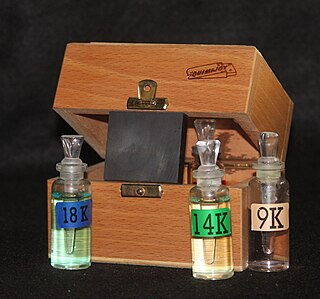 W
WA touchstone is a small tablet of dark stone such as slate or lydite, used for assaying precious metal alloys. It has a finely grained surface on which soft metals leave a visible trace.
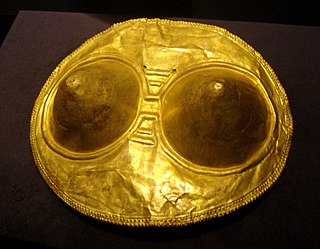 W
WTumbaga is the name for a non-specific alloy of gold and copper given by Spanish Conquistadors to metals composed of these elements found in widespread use in pre-Columbian Mesoamerica in North America and South America.
 W
WVark, also called varak, is super fine filigree foil sheet of pure metals, typically silver but sometimes gold, used to decorate South Asian sweets and food, but also placed on mounds of saffroned rice served on platters, to make those look more appetising. The silver and gold are edible, though flavorless. Varak is made by pounding silver into sheets a few micrometres (μm) thick, typically 0.2 μm-0.8 μm. The silver sheets are typically packed between layers of paper for support; this paper is peeled away before use. It is fragile and breaks into smaller pieces if handled with direct skin contact. Leaf that is 0.2 μm thick tends to adhere to skin if handled directly. Vark sheets are laid or rolled over some South Asian sweets, confectionery, dry fruits and spices. For safety and ethical reasons, the government of India has issued food safety and product standards guidelines for manufacturers of silver foil.
 W
WZwischengoldglas, is a type of decorated glassware in which a design in gold leaf is created on a glass vessel, then sealed under another precisely-fitting glass vessel, which is then bonded to the first piece with cement. The use of adhesive rather than fusing by heat the two layers of glass is what distinguishes the process in English from the gold glass technique, which was popular in the late Roman Empire, although in German "zwischengoldglas" is often used for both.